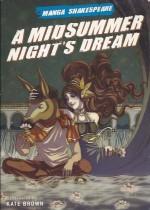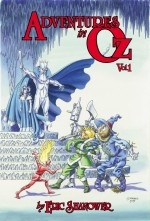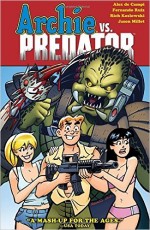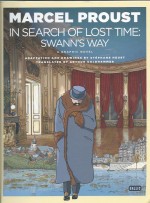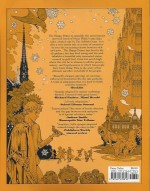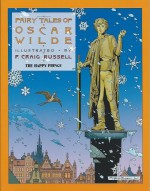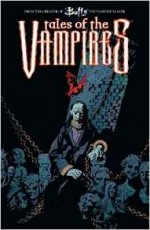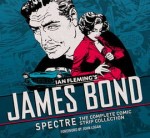
By Joss Whedon, Christopher Golden, Daniel Brereton, Scott Lobdell, Fabian Nicieza, Paul Lee, Eric Powell, Joe Bennett, Cliff Richards, & various (Dark Horse)
ISBN: 978-1-59307-784-6
Blood-drenched supernatural doomed love is a venerable if not always creditable sub-genre these days, so let’s take another look at one of the ancient antecedents responsible for this state of affairs in the shape of Dark Horse Comics’ translation of the cult TV show franchise Buffy the Vampire Slayer.
Collected here in the first of seven big bad Omnibus editions is material from Buffy the Vampire Slayer: Spike & Dru #3 (December 2000), Buffy the Vampire Slayer: the Origin (January-March 1999) and Buffy the Vampire Slayer #51-59 (November 2002 to July 2003); nearly three hundred pages of full-colour mystical martial arts mayhem and merriment.
As explained in comicbook Editor Scott Allie’s Introduction, although the printed sagas and spin-offs were created in a meandering manner up and down the timeline, this series of books re-presents them in strict chronological continuity order, beginning with a perilous period piece entitled ‘All’s Fair’ (by Christopher Golden with art Eric Powell, Drew Geraci & Keith Barnett) from Buffy the Vampire Slayer: Spike & Dru #3 originally from December 2000.
Although Buffy was a hot and hip teen cheerleader-turned-monster-killer, as the TV series developed it became clear that the bad-guys were increasingly the real fan-favourites. Cool vampire villain and über-predator Spike eventually became a love-interest and even a suitably tarnished white knight, but at the time of this collection he was still a jaded, blood-hungry, immortal, immoral psychopath… every girl’s dream date.
His eternal paramour was Drusilla: a demented precognitive vampire who killed him and made him an immortal bloodsucker. She thrived on a stream of fresh decadent thrills and revelled in baroque and outré bloodletting.
There has been an unbroken mystical progression of young women tasked with killing the undead through the centuries, and here we see the Chinese Boxer Rebellion of 1900, where Spike and Dru are making the most of the carnage after killing that era’s Slayer. The story then shifts to the Chicago World’s Fair of 1933 where the undying mad lovers are still on the murderous prowl. However, the scientific wonders of the modern world displayed in the various exhibits are all eclipsed by one scientist who has tapped into the realm of Elder Gods as a cheap source of energy.
To further complicate matters Spike and Dru are being stalked by a clan of Chinese warriors trained from birth to destroy the predatory pair and avenge that Slayer killed in Beijing…
Gods, Demons, Mad Scientists, Kung Fu killers, Tongs and terror all combine in a gory romp that will delight TV devotees and ordinary horrorists alike.
Next up is a smart reworking of the cult B-movie which launched the global mega-hit TV.
Starring Kristy Swanson, Donald Sutherland, Luke Perry and Rutger Hauer, the film was released in 1992 with a modicum of success and to the lasting dissatisfaction of writer/creator Joss Whedon. Five years later he got to do it right and in the manner he’d originally intended. The ensemble action horror comedy series became something of a phenomenon and inspired a new generation of Goth gore-lovers as well as many, many “homages†in assorted media – including comics.
Dark Horse won the licensing rights in the USA, subsequently producing an enthralling regular comicbook series plus a welter of impressive miniseries and specials. In 1999 the company – knowing how powerfully the inclusivity/continuity/completism gene dominates comics fan psychology – finally revisited that troublesome cinematic debut with miniseries Buffy the Vampire Slayer: the Origin running from January to March.
Scrupulously returning to the author’s script and core-concept, restoring excised material, shifting the tone back towards what Whedon originally intended, whilst reconfiguring events until they better jibed with the established and beloved TV mythology, adaptors Christopher Golden & Daniel Brereton with artists Joe Bennett, Rick Ketcham, Randy Emberlin & J. Jadsen produced a new 3-issue miniseries which canonically established exactly what the formerly vapid Valley Girl did in her old hometown that got her transferred to scenic Sunnydale and a life on the Hellmouth…
It all kicks off in ‘Destiny Free’ as shallow yet popular teen queen/cheerleader Buffy Summers shrugs off recurring nightmares of young women battling and being killed by vampires throughout history to continue her perfect life of smug contentment. Even a chance meeting with grungy stoner bad-boys Pike and Benny can’t dent her aura of self-assured privilege and studied indolence.
The nightmares keep mounting in intensity, however, and all over town teenagers are disappearing…
Things come to a head the week her parents leave town for a trip. In a dark park, a maniac attacks Pike and Benny and is only driven off by the intervention of a mysterious, formidable old man. Even so the assailant manages to take the screaming Benny with him…
Next day the same old geezer is at school, annoying Buffy. She is blithely mocking until he tells her about her nightmares and explains that she has an inescapable destiny… as a slayer of monsters…
Meanwhile, deep in the bowels of the Earth a monster is marshalling his forces and making terrifying converts out of the spoiled worthless children of California…
Buffy’s strange stalker is exceedingly persistent and that night, despite her disbelieving misgivings, she and Merrick – an agent of an ancient, monster-hunting secret society – lurk in a graveyard waiting for a recently murdered man to rise from his fresh grave…
When he does – along with unsuspected others – Buffy’s unsuspected powers and battle reflexes kick in and, against all odds, she spectacularly overcomes…
‘Defenseless Mechanisms’ finds the aggressively altered Buffy grudgingly dropping her fatuous after-school activities and friends to train with the increasingly strident and impatient Watcher Merrick. Even though her attitude is appalling and her attention easily diverted, the girl is serious about the job, and even has a few new ideas to add to The Slayer’s traditional arsenal…
Even as she starts her career by pretending to be a helpless lost girl to draw out vile vamps, across town Pike is in big trouble. He also knows what is happening: after all every night Benny comes to his window, begging to be let in and offering to share his new life with his best buddy…
At school the change in Buffy is noticeable and all her old BFFs are pointedly snubbing her, even as every sundown Lothos‘ legion gets bolder and bigger. A fatal mistake occurs on the night when Slayer and Watcher save the finally outmanoeuvred Pike from Benny and the Vampire Lord. Only two of the embattled humans survive and escape…
The tales escalates to a shocking climax when the undead army invades the long-awaited Hemery High School dance looking for Buffy and fresh meat/recruits. With his bloodsuckers surrounding the petrified revellers and demanding a final reckoning, Lothos believes his victory assured, but in all his centuries of unlife he’s never encountered a Slayer quite like Buffy Summers…
As Allie’s Introduction already revealed, there are major hassles involved in producing a licensed comicbook whilst the primary property is still unfolding. Thus, as the print series was winding up the editors opted for in-filling some glaring gaps in the Slayer’s early career. Buffy the Vampire Slayer #51-59, spanning November 2002 through July 2003, addresses the period between the film’s end and her first days in Sunnydale, leading off with ‘Viva Las Buffy’ (Scott Lobdell, Fabian Nicieza, Cliff Richards & Will Conrad) which details what the Slayer did next: abandoning her disintegrating family as they prepared to leave LA and the reputation their daughter has garnered.
Buffy hooks with sole survivor and wannabe monster-hunter Pike and they eventually fetch up in Nevada to investigate the apparently vampire-run Golden Touch Casino. The young warriors have no idea that a dark solitary stranger with a heavenly name is stalking them or that somewhere in England a Council of arrogant scholar-magicians are preparing a rather controversial candidate to join her as the new Watcher…
Sadly Rupert Giles has a rival for the post who is prepared to do literally anything to secure the position…
Whilst Pike and the Slayer infiltrate the gambling palace as menial workers, moodily formidable solo avenger Angelus has gone straight to the top and been hired as an enforcer for the management. When both independently operating factions are exposed, the Vamp with a Soul is tossed into a time-trap and despatched back to the 1930s whilst Buffy and Pike battle an army of monsters before confronting the ghastly family of monstrosities running the show in two eras.
The living and undead heroes endure heartbreak and sacrifice before this evil empire is ended forever…
Paul Lee then reveals the bizarre story of ‘Dawn & Hoopy the Bear’ wherein Buffy’s little sister accidentally intercepts a Faustian gift intended for the absent Slayer and finds herself befriended by a demonic Djinn who seems sweet but is pre-programmed for murder…
Through the narrative vehicle of Dawn reading her big sister’s diary, the last piece of the puzzle is revealed in ‘Slayer, Interrupted’ (Lobdell, Nicieza, Richards, Conrad, Lee & Horton) as Buffy’s own written words disclose her apparent delusional state. With no other choice her parents have their clearly troubled teen committed to a psychiatric institution.
Meanwhile in Ireland, Giles – having overcome his own opposition – completes his training preparations by undergoing a potentially lethal ritual and confronting his worst nightmare before heading to the USA, where Angelus and demonic attendant Whistler are still clandestinely watching over the Slayer.
That’s all to the good, as the asylum has been infiltrated by a sorcerous cult intent on gathering “brides†for infernal night-lord Rakagore…
As Buffy undergoes talk therapy with the peculiar Dr. Primrose, she comes to realise the nature of her own mission, her role as a “Creature of Destiny†in the universe and, most importantly, that the elderly therapist is not all she seems either…
With her head clear at last, all Buffy has to do is prove she’s sane, smash an invasion of devils, reconcile with her family and get ready for the new school year at Sunnydale High…
To Be Continued…
Supplementing the hoard of supernatural treasures is a copious photo, Title Page and Cover Gallery with material from Ryan Sook, Guy Major, Bennett, Gomez, Jadsen, René Micheletti, Paul Lee & Brian Horton.
Visually impressive, winningly scripted and illustrated and most importantly proceeding at a breakneck rollercoaster pace, this supernatural action-fest is utterly engaging even if you’re not familiar with the vast backstory: a creepy chronicle as easily enjoyed by the most callow neophyte as by the dedicated devotee.
Moreover in this era of TV binge-watching, with the shows readily available on TV and DVD, if you aren’t a follower yet you soon could – and should – be…
Buffy the Vampire Slayer ™ & © 1999, 2000, 2002, 2003, 2007 Twentieth Century Fox Film Corporation. All rights reserved.

